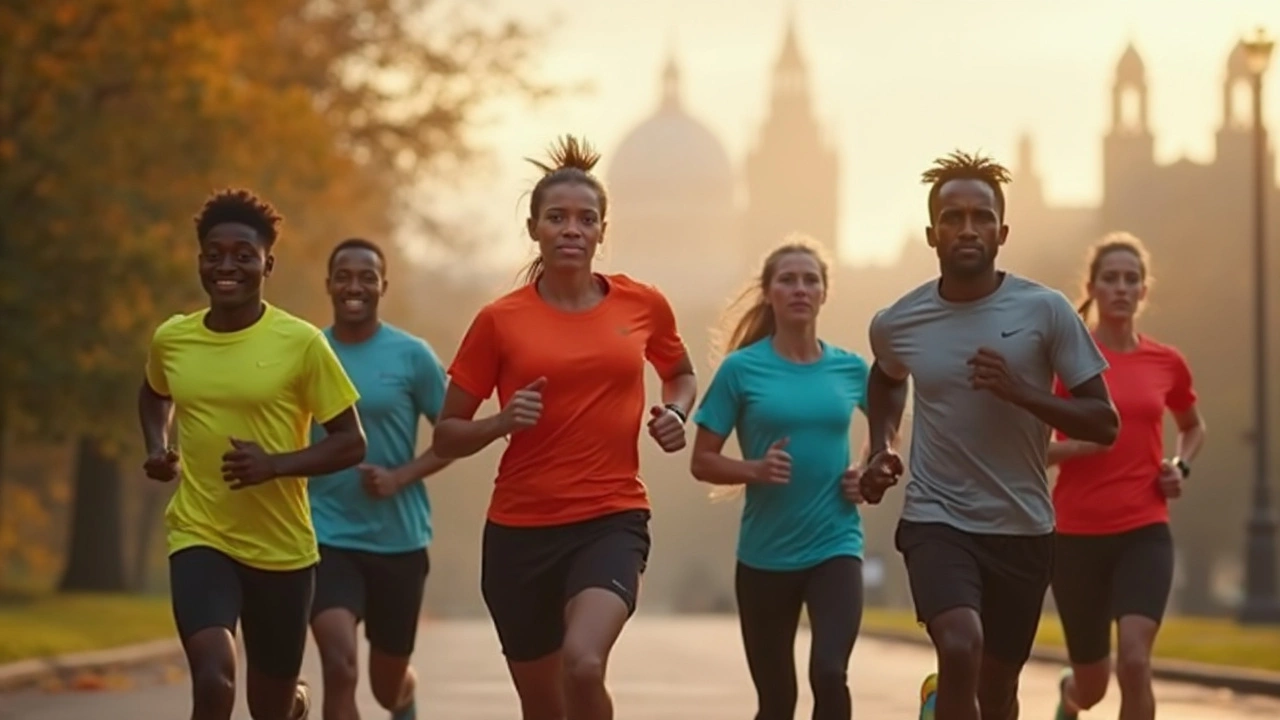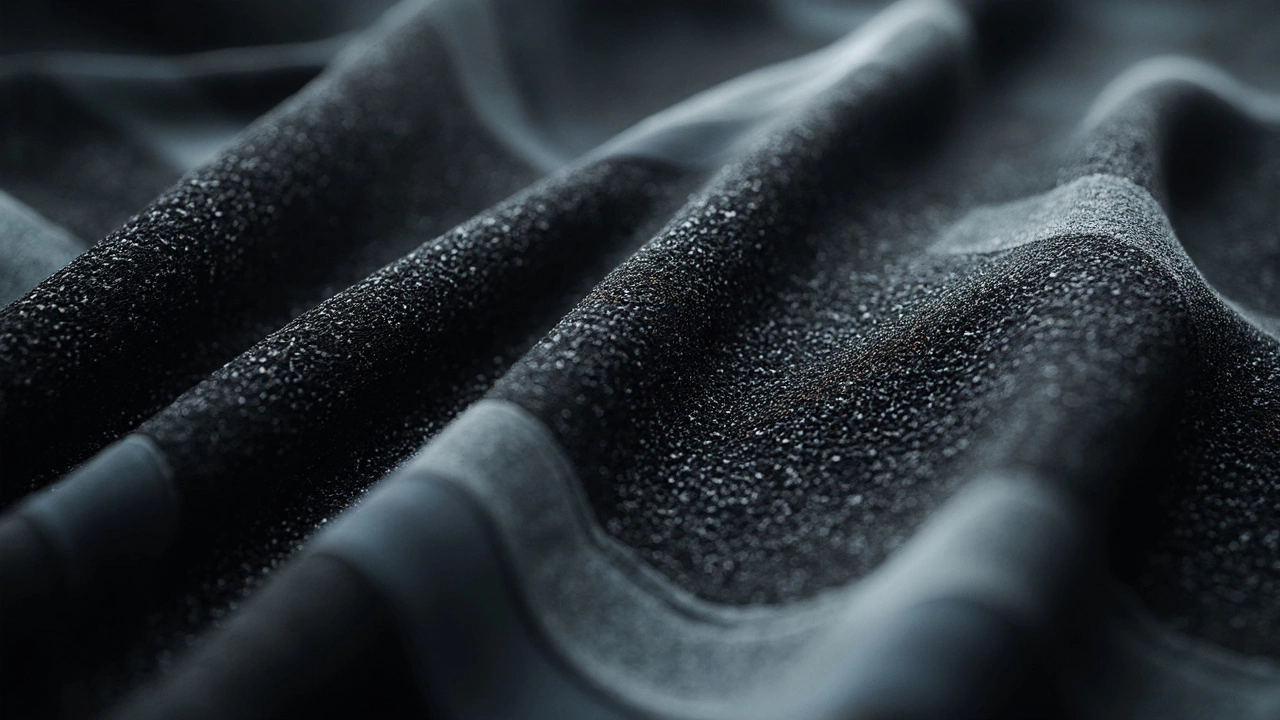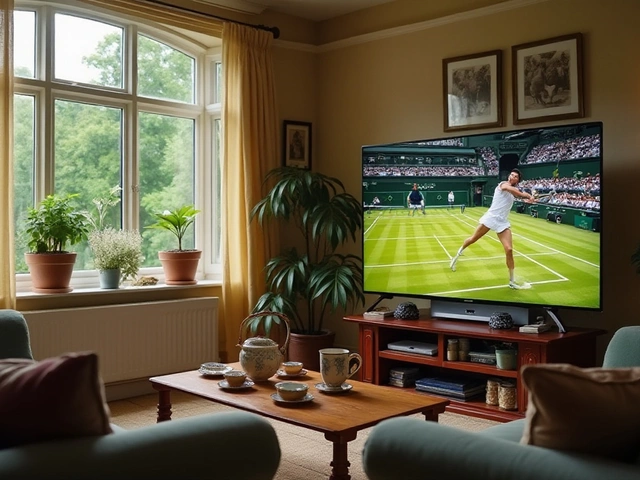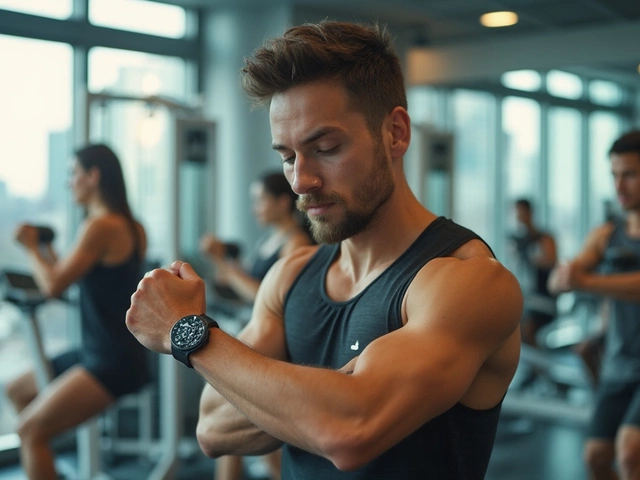
Sports Equipment April 15, 2025
What is an Example of Sportswear?
Ever tossed on an old t-shirt and baggy shorts for a jog and felt like something was off? Yeah, we've all been there. Turns out, what you wear can make a huge difference, not just in comfort but in how you perform too. Sportswear isn’t just about looking good—it’s all about enhancing your workout by keeping you cool, dry, and comfy.
Take a look around a sports shop and you'll notice a ton of options designed for every type of activity. From moisture-wicking tops to compression leggings, each piece has its bit to play. Maybe you’re into running; those breathable running shirts and cushioned shoes are like superheroes in disguise. Want to lift weights? There’s specially designed gear that supports your movements and helps prevent injuries.
But, what makes a simple piece of clothing transform into 'sportswear'? It often comes down to thoughtful design and high-tech materials. Fancy terms like 'polyester blends' might sound strange, but these materials are crafted to regulate your body temperature, wick away sweat, and even resist odor all while you get your game on. So, next time you gear up, think of it as more than just clothing—consider it the toolkit for your fitness adventures.
- Understanding Sportswear Basics
- Key Features of Sportswear
- Popular Sportswear Examples
- Choosing the Right Sports Gear
Understanding Sportswear Basics
When you're picking out sportswear, it's all about finding the sweet spot between form and function. Let's break it down. The core idea is to enhance your physical activity—whether you're just headed to the gym or doing a full marathon run.
First things first, the fabric. Ever notice how some materials cling, stretch, or breathe just right? That's the magic of textile tech in action. Most athletic clothing like running tops or gym leggings usually features a mix of synthetic fibers like polyester or nylon. They're not just buzzwords—these materials are chosen for being light, stretchy, and moisture-wicking.
Then there's the fit. Sportswear isn't supposed to be like your regular baggy t-shirt lounging at home. It should feel snug (in a good way) to support your muscles without restricting movement. This leads to better blood flow and helps in reducing muscle fatigue.
If you're into a particular sport, you might notice specialized designs. For instance, some tops have mesh panels strategically placed for breathing and others might have reflective strips if you're jogging at night. It's tiny details like these that say 'we see you and understand what you need.'
Finally, let's touch on brand technology. Different brands offer unique tech, like Nike's Dri-FIT or Adidas's Climalite. These aren't just fancy marketing names; they're scientifically designed to push the performance barrier a notch higher, keeping sweat at bay while you go about your workout routine.
Here's a quick comparison of common sportswear options:
| Material | Properties | Best For |
|---|---|---|
| Polyester | Durable, moisture-wicking | General workouts |
| Nylon | Stretchy, soft | Yoga, running |
| Cotton blend | Soft, breathable | Low-intensity workouts |
Remember, not all sportswear is created equal. So, when picking out your next gear, pay attention to these basics and see how they cater to your specific sports equipment needs.
Key Features of Sportswear
When you're investing in sportswear, you want pieces that will actually help you perform better, not just look cool. So, what sets athletic clothing apart from your everyday wear? Let's break it down.
First things first, the fabric is a game-changer. Most athletic clothing is made with specialized materials like polyester blends. These aren't just your run-of-the-mill fabrics; they’re engineered to be breathable and moisture-wicking. That means when you start to sweat—as you do—they draw the moisture away from your skin, keeping you dry and cool. This is super important if you’re hitting the gym hard or running outdoors.
Another big feature is flexibility and fit. Good sports gear usually has some stretch to it. You'll often find a mix of spandex or elastane woven in for that extra give. This ensures that your clothes move with you, whether you're doing yoga, lifting weights, or sprinting. No one wants to feel restricted, right?
Durability is also key. Let's face it, workout clothes take a beating. Repeated washes, lots of movement, and intense use mean you need something that’ll last. Look for reinforced stitching which helps prevent wear and tear over time.
- Moisture-wicking - Keeps sweat away from the skin.
- Breathability - Lets air circulate to prevent overheating.
- Flexible fabrics - Ensure unrestricted movement.
- Durability - Built to withstand wear and tear.
The little things can make a big difference too. Things like flat seams and tagless designs are all about comfort, avoiding irritation during those long workouts. Plus, features like reflective strips can be a lifesaver if you're jogging at night.
It's not just about fancy fabrics and engineering. Some sportswear now includes techy features like UV protection and pocket designs for subtly holding your gear while you focus on your activity. The idea is to think of your sports clothes as tools that give you an edge and make exercise more enjoyable.
| Feature | Purpose |
|---|---|
| Moisture-wicking | Keep skin dry |
| Breathability | Prevent overheating |
| Flexibility | Allow easy movement |
| Durability | Last through wear & tear |

Popular Sportswear Examples
When it comes to sportswear, the choices can feel overwhelming. But don't worry, I've got you covered with some of the most popular and effective options out there. Whether you're a gym buff or a weekend warrior, these examples offer the blend of style and functionality you need.
Athletic Shoes: Your feet deserve some love, right? Running shoes are a classic example of essential athletic clothing. Brands like Nike and Adidas have paved the way with amazing cushioning and support. They often come with breathable materials that keep your feet cool, reducing the risk of blisters during long runs.
Compression Wear: These are like your secret weapon—leggings, shirts, and sleeves designed to improve circulation and reduce muscle fatigue. Big brands like Under Armour and Skins have made a name here by providing gear that fits snugly, supporting your muscles during intense workouts.
Moisture-Wicking Tops: Ever heard of Dri-FIT? It’s Nike’s technology to keep athletes dry and comfy by drawing sweat away from the skin. Whether you’re into cycling or yoga, a sweat-wicking t-shirt or tank top is a staple in any sports wardrobe.
Sports Bras: For women, a good sports bra is crucial. Brands such as Lululemon and Sweaty Betty are favorites, offering styles that cater to different activities, ensuring proper support and minimizing discomfort, so you can focus on your fitness goals.
High-Tech Jackets: Don’t let the weather stop you. Jackets made for sports, like those from The North Face, are designed to be lightweight and breathable while providing enough warmth and protection from wind and rain.
| Sportswear Item | Recommended Usage |
|---|---|
| Running Shoes | Long-distance running, casual jogging |
| Compression Wear | Weightlifting, high-intensity training |
| Moisture-Wicking Tops | Cycling, yoga, general workouts |
| Sports Bras | Running, aerobics, all sports |
| High-Tech Jackets | Outdoor activities in various weather conditions |
Charts and sales numbers reveal a growing trend towards the use of sustainable and eco-friendly materials in sportswear, too. Brands like Patagonia are paving the way with their environmentally conscious approaches. So next time you shop for sportswear, consider choices that don't just help you but the planet as well!
Choosing the Right Sports Gear
Picking the right sportswear and gear isn't about grabbing the first thing you see. It’s about matching your equipment with your activity and personal needs. Let's break it down.
First off, think about what sport or activity you’re gearing up for. Running a marathon? Prioritize athletic clothing with breathable, sweat-wicking fabric to keep you comfortable over long distances. If yoga's more your style, aim for stretchy materials that allow free movement and have non-slip qualities for tricky poses.
The fit and feel play a huge role too. Your gear should feel like a second skin, offering the right balance of snugness and flexibility. Compression clothing is great for boosting circulation and reducing muscle fatigue, which is something to consider if you're into endurance sports.
Don’t underestimate footwear. Whether you're pounding the pavement or hitting the gym, the right shoes make a world of difference. Running shoes need good arch support and cushioning, while cross-trainers should offer stability for lateral movements.
- Identify your sport: Different activities require different gear.
- Material matters: Choose sweat-wicking, lightweight fabrics.
- Fit is key: Ensure your gear fits well and moves with you.
- Footwear focus: Pick shoes based on your activity for proper support and comfort.
Remember, investing in quality sports gear isn't just about performance; it's about your safety and well-being too. Avoid skimping on essential sports equipment—your body will thank you in the long run.




